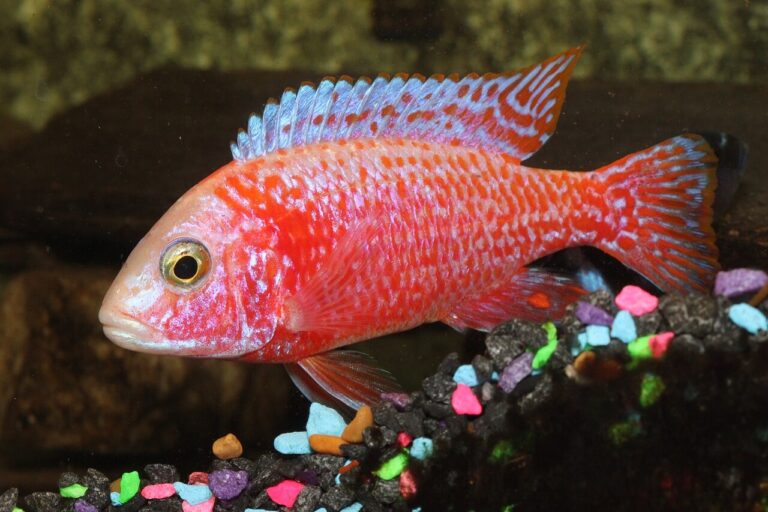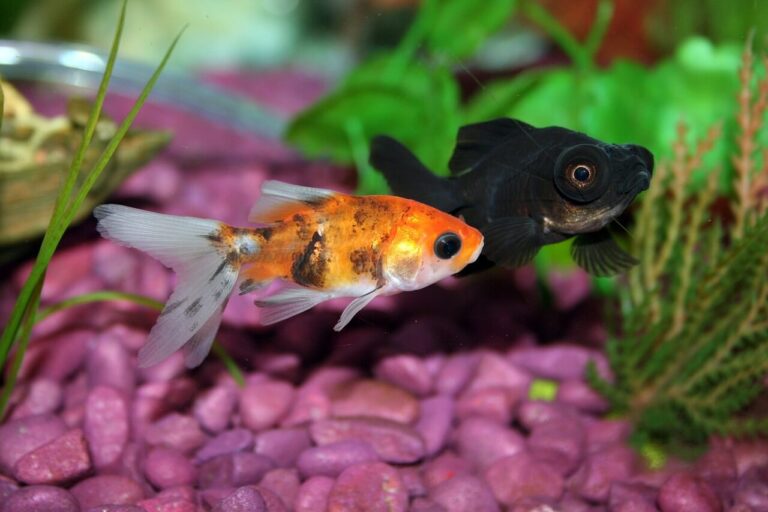Avoiding common mistakes: a guide to setting up a healthy aquarium for your fish
Setting up an aquarium can be an exciting adventure, that is both rewarding and fulfilling. A beautiful aquarium can bring a touch of nature inside your home and provide some entertainment as your fish swim and interact with each other. But, many people make mistakes when first setting up their aquariums. This can lead to poor water quality, fish health issues and sometimes even death for the fish. To make sure that your aquarium is set up correctly, it is important to be aware of some common mistakes that can occur when setting up your aquarium for the first time. In this guide on mistakes beginners make when setting up a aquarium we will show you how to avoid the most common mistakes that occur when setting up an aquarium for the first time.
Common mistakes to avoid when setting up your aquarium for the first time.
1. Not cycling the tank before adding fish.
Not cycling the tank before adding fish is the most common mistake people make when setting up an aquarium for the first time. The nitrogen cycle, also known as the biological cycle, is the process in which bacteria colonize the tank and break down harmful waste products like ammonia and nitrite. This process can take several weeks to establish, and it is crucial to cycle the tank before adding fish.
When too many fish are added to a tank before it is fully cycled, the ammonia can build up and cause a spike which will cause adverse health effects in your fish. High levels of ammonia and nitrate can be harmful to fish and even lead to death if not treated. A tank that is not cycled will often have higher ph readings and lower oxygen levels which can stress a fish out, leading to disease and sickness.
To avoid this problem, you should cycle the tank before adding large numbers of fish.
How to cycle a tank
There are two common ways to cycle a tank, one is the fishless method, and the other is the seeded method. The fishless cycle involves adding water additives to the tank to start establishing the beneficial bacteria colonies and start to establish the nitrogen cycle.
The seeded cycle involves using some filter media or substrate from an established tank to jumpstart the nitrogen cycle.
Once you have started the cycle, it is important to monitor the water parameters like the PH balance, temperature, and nitrogen levels to make sure your water quality is good before adding any fish.
In conclusion, cycling a tank properly is key to avoiding the number once cause of tank failure when setting up a new tank.
2. Overstocking the tank
Overstocking the tank is another common mistake that beginners make when setting up their fish aquarium for the first time. This happens when there is too many fish in the tank and not enough natural bacteria to offset the waste the fish are producing.
The biggest problem of overstocking a tank right away is with water quality. When there are too many fish and not enough filtration or natural bacteria in the aquarium, you will get massive spike in ammonia leading to lethargic fish. These chemicals are toxic to fish in a high enough concentration and can lead to poor health and even death.
Overstocking can also lead to increased competition for food and and space. Each fish species requires a specific amount of space to feel comfortable and safe. In a sn overstocked tank fish will not fish maynot ahave nough room toswim arounda nd sexplore ant his will elead to fish taht are unhealthy.
A general rule of thumb is one gallon of water per one inch of fish but this is a general guideline at best. When you are first starting your tank it is better to stay on the side of caution and give your tank a chance to cycle and become healthy before stocking your tank.
To avoid overstocking your tank research the specific needs of your fish and make sure your tank can handle their needs.
Overstocking can lead to poor water quality and increased competition for food and space which will lead to unhealthy fish. Make sure that to start off, you do not put too many fish into your tank.
3. Not researching your fishes needs
Not researching your fishes needs is another common mistake that beginners make. Every species of fish is unique in the care it requires and the water parameters that will keep it healthy.
Each fish needs a specific water temperature, ph balance, and water hardness. Its important to know what your fish needs so you can set up your tank the right way for optimal fish health.
Another important part of caring for you fish is the diet your fish needs. Does it prefer live food or plant based food. Each of these foods will impact the water quality of your tank.
If you do not research your fishes needs you will find that your fish are not as healthy as they could be. They will not swim around very much and interact with each other. The better job you can do to provide a healthy environment for your fish the more you will enjoy your aquarium.
4. Improper feeding.
Improper feeding is another common mistake people make when setting up an aquarium for the first time. Feeding the fish too much, too often, or the wrong type of food can be a recipe for disaster.
Overfeeding can lead to the buildup of uneaten food in the bottom of the tank or in the filter media. This can lead to a spike in nitrites and nitrates, bringing down the oxygen levels in the aquarium. Overfeeding will also lead to increased waste production by the fish, which will strain the whole natural biological system in your tank.
The feeding schedule is often overlooked but can make a difference in the overall health of your fish. Fish have different feeding habits; some like to be fed once a day or once a night, while others like to be fed multiple times per day in small amounts.
To avoid improper feeding, it is important to research the feeding charismatics of your fish and make sure you are providing a healthy environment for them to thrive.
5. Not maintaining the tank
Not maintaining the tank is another common mistake that beginners make when first setting up their aquarium. Regular maintenance is an important part of keeping your fish healthy and your aquariums water parameters in line. Neglecting the maintenance of the tank will lead to unhealthy fish and even death.
The most important parts of maintaining fish tank is water changes. When you first set up your tank you should change out at least 25 percent of the water each week using a vacuum that cleans the substrate at the same time. Fish produce waste and this can lead to poor water quality. Water changes help remove the waste and replace the water with well oxygenated water.
Cleaning your filter out once week is also another part of quality water within you aquarium. You should change your filter media every time you do a water change. This will prevent the filter from clogging up and wrecking the parameters of your tank.
Cleaning the walls of you aquarium will help reduce unsightly algae and other bacteria. If you do not do this on a regular basis it can be very hard to get off.
6. Lighting
Lighting is an important part of setting up an aquarium and improper lighting can have a big impact on the health of your aquarium. The right lighting will improve the health of your plants and fish. While having the wrong lighting will lead to problems such as algae growth or not providing an optimal environment for your species of fish.
You should research the lighting requirements of your species of fish and what lighting they prefer. Some fish do better in low lighting and some do better with more natural bright lighting.
7. Substrate
The type of substrate you choose for your aquarium can have an impact on the overall quality of your fish, plants and water. Whether it be aquarium gravel, aquarium sand, or rocks the right substrate will improve the quality of your tank. Substrate that is maintained properly will improve the nitrogen cycle, make the tank look more natural and create a healthy environment for certain types of fish and plants.
8. Live plants
Live plants are one of the easiest ways to improve the water quality and health of your aquarium. Aquarium plants can help create a natural looking environment and provide hiding spaces for your fish if they need a place to relax. Aquarium plants can also improve water quality by absorbing excess nutrients and creating more oxygen in the water.
Conclusion.
If you start your tank with plan and avoid some of these common mistakes you will find that your fish are healthier and your water will be crystal clear.
How long should you wait before putting fish in new aquarium?
You should wait at least two weeks before putting fish into a brand new aquarium. This will give the aquarium a chance to cycle through the nitrogen cycle.
When to do the first water change in new aquarium?
You should do your first water change in an aquarium as soon as you see a spike in the nitrites and nitrate levels in your aquarium. This means testing the water daily for the first couple of weeks to monitor the quality of your aquarium water.
FAQ’s on avoiding mistakes when setting up your aquarium
How often should I perform water changes?
You should change out approximately 25% of your tanks water once a week but this is not set in stone. There are a lot of variable such as; How many fish are in your tank, how big your tank is, is your tank planted, and how established is your tank. All these thing play into the amount of water you need replace on weekly basis. The best thing to do is invest in a good quality test kit and monitor the toxins in your water. This will give you a good idea on how much water to change out on weekly basis.
What type of filter should I use in my aquarium ?
The type of filter you use in your aquarium will depend on the size of the tank, and the type of fish you have. It’s important to research the specific needs of your fish and the appropriate filtration system for your tank. Canister filters, hang-on-back filters, and internal filters are some of the most common types of filters and they all have a place in aquarium.
Is it okay to add too many fish to my tank?
No, overstocking tank can lead to poor water quality, and disease in fish. It is always better to add just couple of fish at a time and monitor the water parameters.
Can I add fish to my tank immediately after setting it up?
No, it is important to cycle a tank before adding fish. Cycling a tank refers to the process of establishing the nitrogen cycle in the tank, which is essential for the health and well-being of the fish. The process of cycling a tank takes several weeks, and it’s important to monitor water parameters during this time to ensure that the water does not spike in bad nitrates and nitrites.






